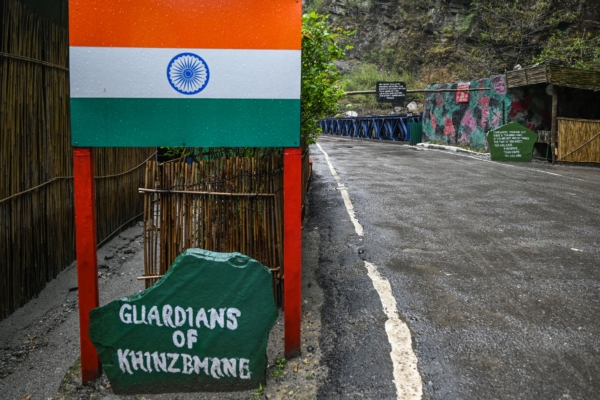India’s Commerce Minister has stated that India refuses to join the Regional Comprehensive Economic Partnership (RCEP) led by the Chinese Communist Party, insisting that signing a free trade agreement with China does not align with India’s interests. Experts believe that India’s refusal to join the RCEP led by China is driven by various factors, with the escalating tensions at the border and in diplomacy between the two countries being a core issue.
On September 22, Indian Minister of Commerce and Industry, Piyush Goyal, in an interview with CNBC, stated, “India will not join RCEP because it does not reflect the guiding principles proposed by ASEAN when it was initiated, and signing a free trade agreement with China is not in India’s interest.”
Goyal also pointed out that from a certain perspective, RCEP is just another free trade agreement with China.
The RCEP was initiated by the 10 ASEAN countries and later expanded to include China, Japan, South Korea, Australia, and New Zealand, countries with existing free trade agreements with ASEAN. It was officially signed during the East Asia Summit in 2020 and came into effect in January 2022. Given that China is the largest economy among the RCEP participating countries and actively promotes the agreement, it is widely believed that China is the driving force behind RCEP.
RCEP negotiations began in 2013 and initially included India. However, in 2019, India chose not to join the agreement.
Taiwanese economic expert Huang Shicong told Epoch Times that India imports a significant amount of products from China, resulting in a long-term trade deficit for India and placing the country at a disadvantage. Therefore, India’s decision not to join RCEP can be seen as a strategic move considering the competition between China and India for the title of “world’s factory.”
According to official data from China, the bilateral trade volume between China and India has exceeded $120 billion in the past three years, showing a consistent growth trend. In 2023, the bilateral trade between China and India reached $136.22 billion, a 75.4% increase from 2020. China’s exports to India amounted to $117.68 billion, nearly 100% higher than the previous year, while China’s imports from India were $18.34 billion, a 3.5% decrease from 2020.
China maintains a large trade surplus with India, highlighting the trade imbalance issue.
The ongoing real estate crisis in China has led to a contraction in the domestic construction industry and an oversupply of steel. From April to July this year, China became the largest exporter of steel to India, exporting approximately 807,000 metric tons of steel, followed by Japan and South Korea.
On September 10, the Indian Finance Ministry issued an order to impose tariffs of 12% to 30% on certain steel products imported from China and its neighboring country, Vietnam, in order to protect and promote the local industry.
Yao Yuan, a professor at the University of St. Thomas in the US specializing in international studies, told Epoch Times that the relationship between India and China has gradually shifted from cooperation to competition in the global production landscape. Many manufacturers are choosing between India and China as they vie for the title of the world’s factory. Therefore, India’s decision not to join RCEP seems to be a reasonable outcome and could potentially strengthen its ties with the United States.
He believes that the escalating tensions in border and diplomatic relations between India and China are key reasons behind India’s decision not to join RCEP.
Huang Shicong noted that RCEP, led by China, is relatively loose and includes too many countries with limited actual benefits. While it may favor China, other countries may not benefit significantly from it.
Yao Yuan pointed out that RCEP faces a major challenge as the multilateral free trade agreement proposed about two years ago has vague content. Joining RCEP does not guarantee seamless exports to China, as it is not a democratic or rule-of-law country. China’s acceptance of exports depends on its evolving bilateral relationships with other countries.
During the aforementioned interview, Indian Minister of Commerce and Industry Piyush Goyal criticized China’s trade practices as extremely opaque and highlighted that China exploits WTO policies for its gain by exporting low-quality products that do not meet global standards.
Yao Yuan stated that without India, a significant trading partner, participating in the RCEP, the regional industrial chain created by China lacks completeness. Since India is China’s sixth-largest trading partner, its stance will impact China’s restructuring of the production chain associated with the Belt and Road Initiative.
Regarding other countries within RCEP, Huang Shicong emphasized that India’s exclusion may not greatly affect China, as China’s trade volume with India is not exceptionally large and it can easily find alternative markets. However, the absence of India from RCEP diminishes the overall allure of the organization, as Southeast Asian countries heavily rely on trade with both India and China.
He added that the United States, with its skepticism towards RCEP led by China, stands to benefit from India’s decision. The rivalry between China and the US in the region has intensified, and India is now focusing on strengthening its ties with the US, including through initiatives like the US-led Asia-Pacific Economic Cooperation framework or the Quad meetings.

